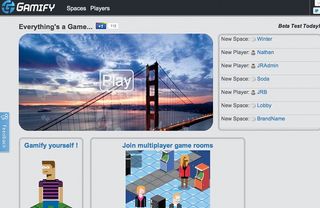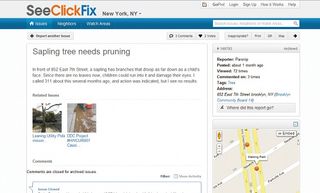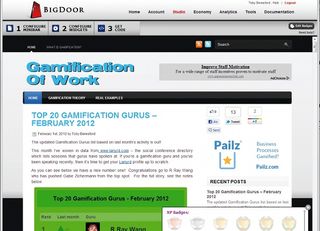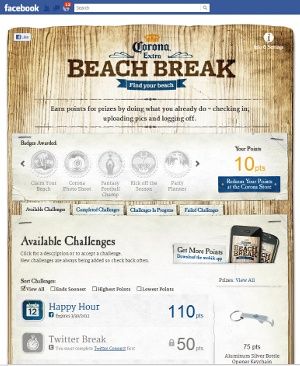The pro’s guide to gamification
Games mechanics are a great way to influence users’ behaviour. Toby Beresford explains how incorporating them into your websites can boost visitor engagement
This article first appeared in issue 228 of .net magazine – the world's best-selling magazine for web designers and developers.
Gamification, the technique of applying game mechanics outside of games themselves, had a good 2011. Tech research company Gartner added it to its ‘hype cycle’ together with ‘The Internet of Things’ and ‘Big Data’. The Oxford Dictionary nearly made it its Word of the Year 2011 (it opted instead for ‘squeezed middle’).
So what does it mean? Gamification is about influencing the behaviour of your website users, visitors and customers by applying game mechanics and treating them like ‘players’. For example, if you have a video content site, you might challenge visitors to watch five videos in a row and reward them if they do so.
If you did, you’d be ‘gamifying’ your website. You’d have taken a game mechanic – offering a ‘reward’ in return for a ‘challenge’ – and used it to motivate your visitors to do more on your site.
The reason this works, and is worth doing, is that game designers have known for ages what makes us tick and how to use that to influence our behaviour.
As human beings, we actually like to be given clear goals, to be able to monitor our progress towards achieving them and to get a reward for completing them.
Challenges and rewards are just one game mechanic you can use to deepen engagement with your site. This is gamification.
Gamification is using game mechanics outside of games. It’s not making the world more like a game. So it’s not:
- Games – Creating a game such as Angry Birds or World of Warcraft. (The distinction: in Angry Birds, everything happens within the game world; it doesn’t affect anything outside the game.)
- Advergames – The use of a casual game to advertise a brand. Kewlbox provides plenty of examples of this genre, from Dunkin’ Donuts skiing to Lego Ninja skills.
- Serious games, or ‘edutainment’ – Where you try to teach with a game, such as the classic educational game for kids, Math Invaders.

Loyalty marketers have used game mechanics for years. Take ‘levels’, for example: if you have ever pined for an American Express Gold Card, then you’ve already been successfully gamified. The ‘Gold’ card is really a ‘level’ giving you access to new features that you wouldn’t have got with the standard blue Amex.
Game mechanics, when used well, don’t really feel like a game. For instance, the business-oriented social network LinkedIn uses a ‘challenge’ mechanic where you’re asked to complete ‘100%’ of your profile.
This doesn’t look like a game but it does help LinkedIn achieve its objective of getting users to complete their profiles so it has access to more user information. It also helps ensure that you, the user, get the most out of LinkedIn by filling in all the right data.
Why gamification?
Transparency
Kris Duggan of Badgeville, a gamification platform, formed the company last year when he noticed that people were spending a lot of time trying to funnel user behaviour on a website. He asked: “What if the users knew what behaviour you wanted from them? What if it was more obvious?” So Badgeville does just that; it shows the actions on your website that win points, which are in turn rewarded with badges.
Visibility
As the anonymous web experience is gradually replaced with a social one, knowing the status of your community members becomes more important. Gamification brings the social stratification that happens in real life online.
Performance
There’s nothing quite like knowing how others are doing to encourage you to step up your own performance. When I go running on Nike+, I not only compare my performance with my previous bests, but also with friends also using the iPhone app. Just as with the PlayStation game Singstar, which arguably gamified karaoke, its universal scoring system and consequent leaderboard change the way we view our singing performance.
Who is gamifying?
Gamification of work
If you think your staff could do with additional motivation, then why not gamify your workplace? Sales professionals are used to comparing their performance with peers. Tools such as Nitro, from Bunchball, enable them to create leaderboards from their activity on CRM tools such as Salesforce.
Paige Thelen, a Bunchball spokesperson, explains, “Enterprises also use Nitro to motivate employees, increase channel productivity and automate incentive programmes”. Those same techniques could apply outside the sales division too. Web development teams might like to try Red Critter Tracker, which overlays Agile project management tools with rewards.
Get the Creative Bloq Newsletter
Daily design news, reviews, how-tos and more, as picked by the editors.

Gamification of data
Gamification can be used to do interesting things with the vast data that companies hold on their customers, whether from online systems that they own, or by mining social network data such as a customer’s Facebook timeline.
On my own blog, gamificationofwork.com, I introduced a leaderboard of ‘Gamification Gurus’ that has proved popular. My leaderboard engine takes each gamification expert across the world and ranks them based on their social network data. My current data sources include Klout, Twitter and Lanyrd. The results are then weighted to give a combined leaderboard.
Gamification of software
Software itself is ripe for improved engagement. Michael Wu of social software maker Lithium Technologies and a recent #4 on the Gamification Gurus list says, “Using gamification techniques in software can help drive greater adoption faster, sustained usage, as well as innovative usages of the software. Depending on the precise techniques, gamification can also drive a lot of collaborative and exploratory user behaviours, which can be extremely beneficial to the software.”
Gamification of government
Governments have been gamifying their citizens for quite a while: an annual tax return deadline might be seen as using a ‘Countdown’ game mechanic, for example.
SeeClickFix focuses on the government itself. At the time of writing, Roosevelt Island’s Operating Corporation in New York has earned 6,655 civic points for responding to issues raised on the site, beating the Brooklyn Community Organisation into second place on the leaderboard.

Here in Europe we can delight in Sweden’s ‘Speed Camera Lottery’ trial where drivers were uniquely incentivised: those who speeded would be fined as usual, but those who passed by within the speed limit were entered into a lottery to win the fines of the drivers speeding. Very neat.
Gamification of communities
Gamified communities can outstrip their more sedate pre-gamified cousins by leveraging crowd engagement to achieve more. Vincent Boon, from giffgaff, a mobile phone network that has seen success by rewarding its community of users, explains his approach: “The ways in which you can interact with giffgaff are gamified in a variety of ways. It was very important for me to reward participation in whichever shape it came.”
But he highlights that it’s not a magic bullet: “While gamification helps people track how they are doing with us, it doesn’t replace genuine interaction and conversation between the business and our users. It’s the mutual support the company and the community give each other that really matters.”
Gamification of the web
With gamification’s main impetus coming from the rise in popularity of social games such as Farmville, the web is the place of wider adoption.
Take Corona’s Beach Break Facebook app. Participants are given challenges that win them points, such as ‘Happy Hour’ where you organise a night out for at least five friends. These points can then be redeemed at the online Corona store for prizes.
Visitors exchange their valuable referral power for rewards. However, a social reward program such as this has to be created with care. Facebook, for example, forbids apps from rewarding a user for spamming their friends, but allows you to reward users for successful recruitment.
Gamification platforms
Baking gamification into your app or website from scratch might be a lot of additional hard work. To help, there are a number of off-the-shelf platforms that promise to give you a leg up.
Seattle-based BigDoor provides a self-service API so you can get started immediately with its gamification widget: “the only one you can configure while naked”.
Carrie Peters of BigDoor explains how its gamification platforms work: “We provide an instant loyalty solution that creates deeper brand affinity through innovative user incentives, including sharing, ability to earn rewards, points and badges as well as participation in quests, earning virtual currency and more.”

She recommends integrating that with your entire site experience: “We find gamification works best on sites that already have a fairly broad community following. Useless points, badges and leaderboards don’t help engage your community. What truly drives loyalty and increases site engagement can be things like built-in social referrals. If a user is proud of what they’ve accomplished on your site give them an easy way to share their achievements.”
Three flavours
BigDoor comes in three flavours – an instant ‘MiniBar’ widget, a developer API and an enterprise edition. All are connected, so you can start with the widget and delve deeper as your needs grow. Your MiniBar comes preloaded with standard badge tracks for check-ins, shares and influences. You can choose which badge tracks to show, and the thresholds for each badge.
To brand it, you’ll need an 85x24px version of your logo – and if you don’t want to use the standard badge graphics then a 64x64px square for each will be required.
Add the two lines of JavaScript to your site header. The widget fires up automatically for each visitor. Job done.
Once you’ve got the basics in place it’s then possible to use the developer API to gamify activities more specific to your site, for example tracking video views. The API enables you to define your own transactions, currencies and badge tracks to build up the experience.
Pitfalls to avoid

As with many new techniques, there are pitfalls to avoid. Paige Thelen from Bunchball says: “There is good gamification and bad gamification. It’s critical that you understand your userbase, identify which user behaviours you want to influence, and design a program that feels organic and compelling. Simply slapping badges on your site might see some initial positive results, but we’ve seen that ongoing engagement is only achieved through a well-designed and relevant program.”
Experts call this problem the ‘shark fin’ effect: where high initial engagement wears off quickly. We saw this recently with Foursquare, the location-based social network, which handed out badges so frequently that users complained of ‘badge fatigue’: being given too many meaningless badges. Foursquare resolved this with ‘badge rewards’ – privileges just for badge owners. For example, at Internet Week 2010 in the USA, owners of the Internet Week badge gained just by using Foursquare to check in at the show, getting VIP ‘past the bouncer’ access to several evening events.
Intrinsic and extrinsic motivation
When planning your gamification initiative spend some time evaluating a user’s intrinsic motivation before offering rewards that create an extrinsic motivation. Our human psychology is that if we are rewarded (or paid) to do something it must be work, and we will only continue to do it if we continue to get paid. No-one likes to ask a child to do something if the resulting response is, “I’ll do it, but only if you give me a chocolate bar”.
Managing the size of the reward and the work required to achieve it (known as the ‘reward schedule’) is critical to getting a balance. Proportionally too high a reward, too regularly given and requiring too little work ends up distorting the intrinsic motivation of our customers.
In fact, gamification practitioners often prefer to use ‘variable ratio rewards’, the same mechanic that keeps gamblers hooked to slot machines.
The way this powerful mechanic works is as follows: say you have 100 boxes, inside six of which are rewards. Your objective is to keep people engaged such that they open all 100 boxes. If you put the rewards at a fixed interval, inside say, every 10th box, then when it comes to the empty 70th box, players will stop searching, correctly surmising that there are no more rewards to be found. However, if you spread the rewards randomly across all 100 boxes, players behave differently – they will search all the boxes right up to the 100th because they don’t know where the rewards will occur.
Good use of language
Gamification is perhaps best seen as an ‘under the bonnet’ technique. Surfacing too much to customers can come across as too gamey. By carefully considering the language you use, you can appeal to more visitors. For example, customers of a health advice site might not fancy completing a ‘Quest’ but they would jump at achieving a ‘Healthy Living Goal’.
And so, dear reader, this is gamification – a way to tweak behaviour with transparent rewards and drive deeper engagement by encouraging users to improve their own performance. Planning a gamification initiative well means responding to the needs of your community and using its language rather than slapping on points and badges.
It’s no substitute for good products, good websites and good community relationships, but if you’ve already got those, then it will help you turn what you already have from good to great.
For more details, see Gamification: nugget of wisdom or fool’s gold?

Thank you for reading 5 articles this month* Join now for unlimited access
Enjoy your first month for just £1 / $1 / €1
*Read 5 free articles per month without a subscription

Join now for unlimited access
Try first month for just £1 / $1 / €1
The Creative Bloq team is made up of a group of design fans, and has changed and evolved since Creative Bloq began back in 2012. The current website team consists of eight full-time members of staff: Editor Georgia Coggan, Deputy Editor Rosie Hilder, Ecommerce Editor Beren Neale, Senior News Editor Daniel Piper, Editor, Digital Art and 3D Ian Dean, Tech Reviews Editor Erlingur Einarsson and Ecommerce Writer Beth Nicholls and Staff Writer Natalie Fear, as well as a roster of freelancers from around the world. The 3D World and ImagineFX magazine teams also pitch in, ensuring that content from 3D World and ImagineFX is represented on Creative Bloq.
